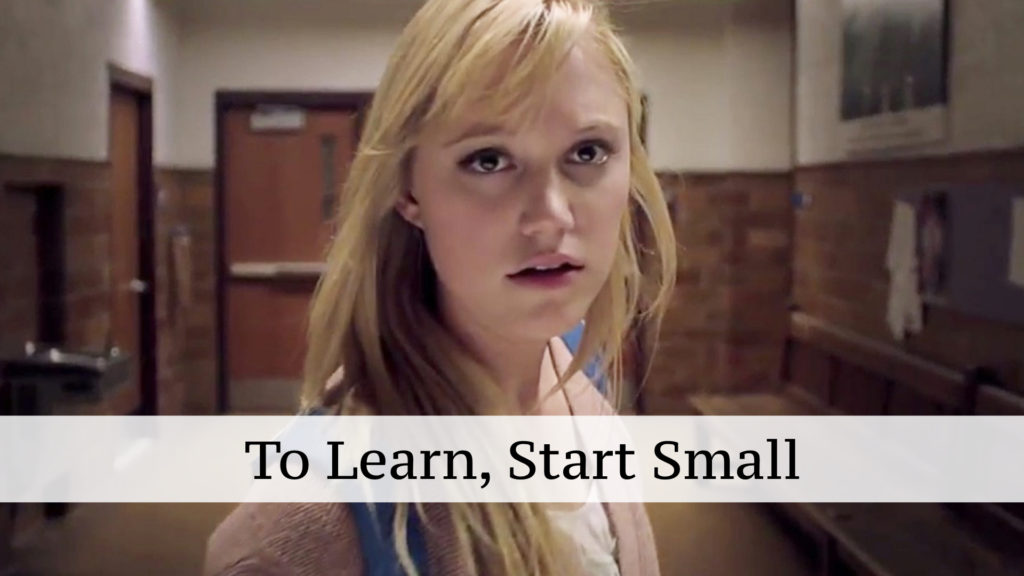I used to work at a horror production company called After Dark Films. We churned out memorable films like Asylum (“A mess, from the moment the film starts, you can see it and feel it” – HorrorNews) and Getaway (2% on Rotten Tomatoes, and “…a reminder of the dangers in attempting to speed past coherent editing, character development, sensible dialogue, and an interesting plot.”)
Looking back with an objectivity and clinicalness that only comes time, I can honestly say: we did not make great films at After Dark.
But it was a terrific place to learn about the film business.
Touching every part of the moviemaking process
Previously, I modeled the process in which most Hollywood films get made (I called it the Reverse Hollywood funnel).
Here’s a quick recap — the further down the funnel, the more money a studio (typically) spends, i.e. money spent on marketing \> money spent acquiring the IP.
- Acquiring the Intellectual Property
- Development
- Attaching elements
- Pre-production, Production, and Post
- Product strategy
- Marketing
- Distribution
I was a script reader (read = lower even than the assistants). At many production companies, this would mean you’d only ever glimpse at the top of the funnel: acquisition and development.
At After Dark, I had the opportunity to touch every piece of the funnel.
Attaching Elements
We ran casting for one of our action films, The Philly Kid (“combat sequences are vivid and believable. Too bad about everything else” – IndieWire) out of the office. I learned how to put together a casting schedule, how to put actors on tape, how directors talked to actors, how directors evaluated actors, and how to load sides and tape to Backstage.
Marketing
I sat next to one of our video editors as he cut dozens of sizzlers and trailers for the films. Between scripts, I helped with marketing, most of which was down and dirty and cheap. That means a lot of mailing out swag and working with scores of niche blogs to generate hype and excitement around upcoming titles.
Distribution
None of our films got a wide release, so I assumed we never made money. Then executives (shout out to Richard Cardona and Lucy Mukerjee-Brown) explained the concept of pre-selling overseas, and I started to learn the intricacies of film financing and distribution.
Stuck in development hell
Prestigious production companies team up with prestigious actors and directors. The projects get set up at studios, for a wide release. There’s hype and circle-jerking when a project gets greenlit, and there’s a lot of name dropping in the trades.
But there’s a lot less of actual movie making.
There are hundreds of examples of the anguish that is a project getting stuck in “development hell”, but here are two examples I’ve come across in my career:
The Deep Blue Goodbye, based on the John D. MacDonald books, has been stuck in development since the late 1990s. Drafts of the script have been penned by writers like Dennis Lehane, Scott Frank, Kario Salem, Dana Stevens, and David James Kelly. Actors with soft commitments to the lead role have included Brad Pitt, Leonardo DiCaprio, and Christian Bale.[note]https://www.hollywoodreporter.com/news/fox-scraps-christian-bales-deep-791342[/note] Still no film.
The Kingkiller Chronicles, by Patrick Rothfuss, was originally optioned to New Regency in July 2013.[note]https://deadline.com/2013/07/new-regency-20th-century-fox-tv-to-adapt-kingkiller-chronicle-for-tv-543291/[/note] Since then, Lin-Manuel Miranda has been attached as an executive producer and the project has been set-up at Showtime[note]https://deadline.com/2017/10/lin-manuel-miranda-executive-produce-the-kingkiller-chronicle-adaptation-showtime-lionsgate-1202195413/[/note]… yet still no TV show for one of the greatest fantasy novels ever written.
Prestigious and larger production companies that team up with a major or mini-major studio (Warner Bros., Disney, NBCUniversal, Fox, Paramount, Sony, Lionsgate) invest years and millions of dollars developing a project and never finish. That’s the model: too many departments with too many hands grubbing over pieces of the pie, and too many asses that need covering. So if you’re just starting your career, you can spend your formative years at one of these companies, yet never see a movie get made.
They weren’t pretty, but films got made at After Dark, this tiny shop that did nearly everything in house (later, it’d get an assist in distribution from Warner Bros.). I’m not arguing it’s the best financial model, and clearly it’s not the model to produce award-winning films.
But in my opinion, it’s the best route to learning the business of filmmaking and entertainment.
The education is what matters here, and the education happened because the shop was small.
Where will you learn the most?
When people start their careers (or start their career over) the first instinct is to chase that Brand Name. They think they should pad the resume, because it creates optionality. It does, and optionality in your career trajectory is a good thing. But unless you’re 50+ years old and looking to retire in 10 years, you have plenty of time to add Brand Names to the resume.
At the start, optimize for education, not brand. Go where you’re going to learn the most.
In the film business, this means a busy, small production company that actually makes movies instead of getting stuck in the HR department at a major studio. In the restaurant business, it might mean starting on the cook line at some hole in the wall in the city instead of working out of the Darden’s corporate office. In tech, turning down a well-paying gig at FAANG and grinding it out in an actual start-up. If athleisure is your thing, pass on being the second-assistant to the marketing director at Lululemon and take the job as first-marketer at a D2C yoga pants company with $2m in sales.
Small is the place to start. It’s where you get your education and develop the skills to go big later.
###
Photo Credit: It Follows

